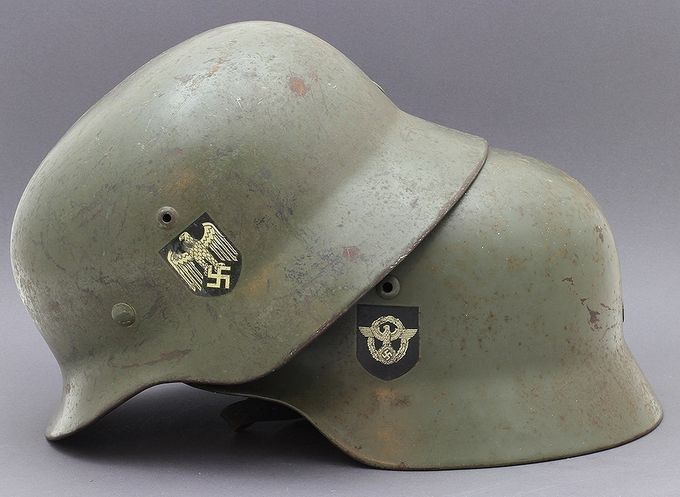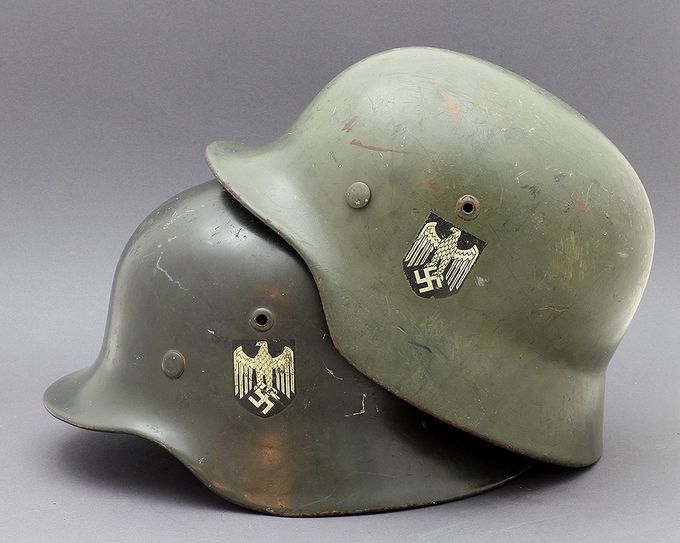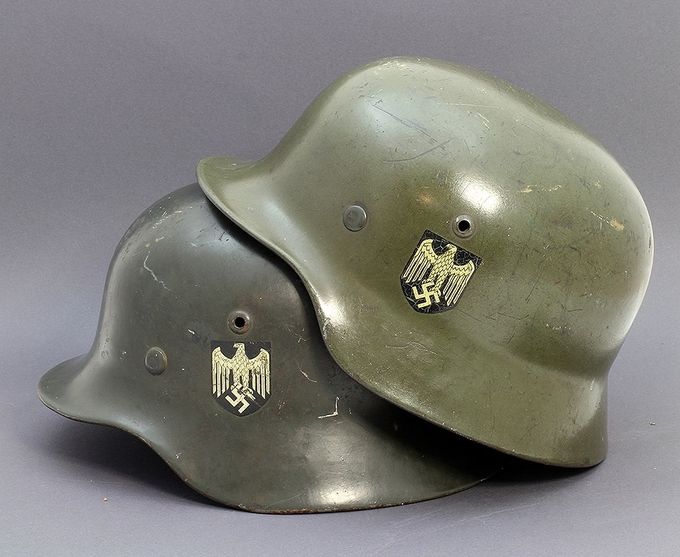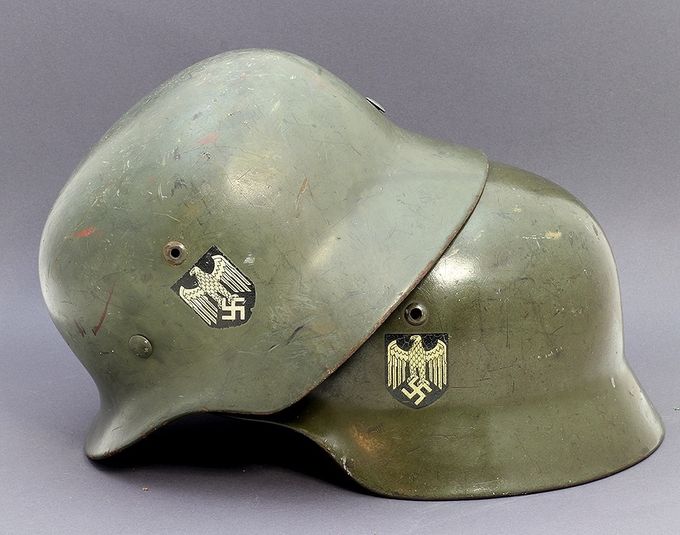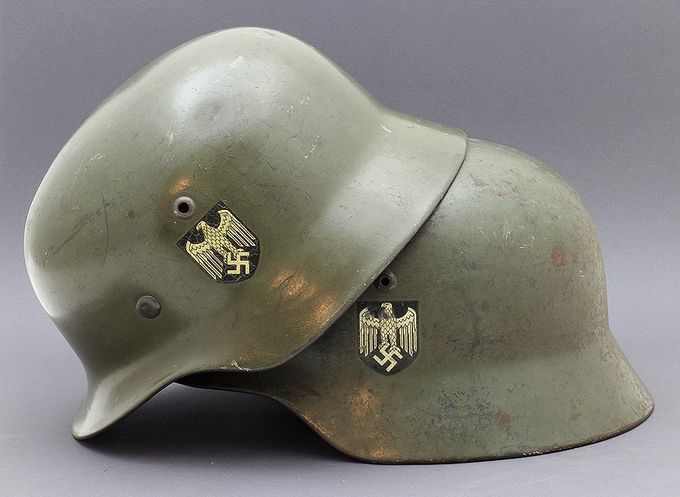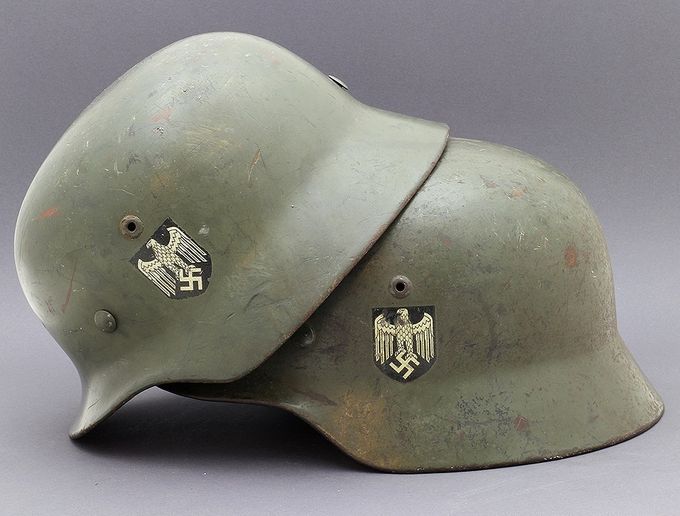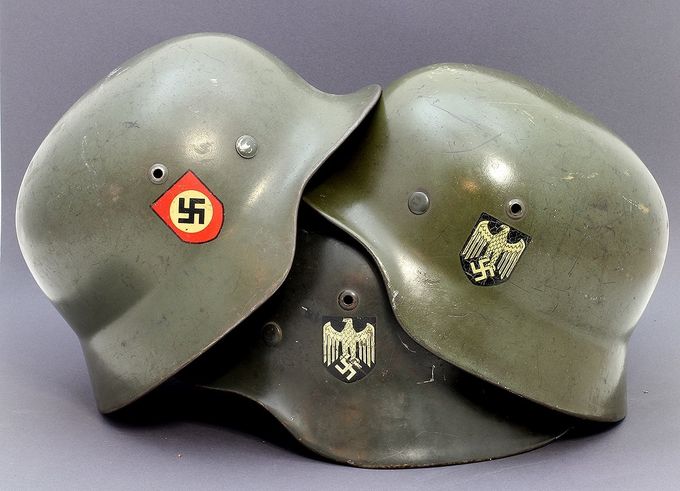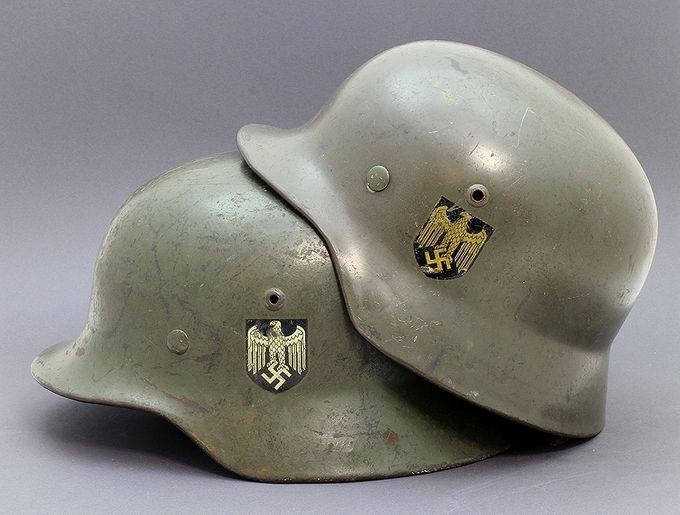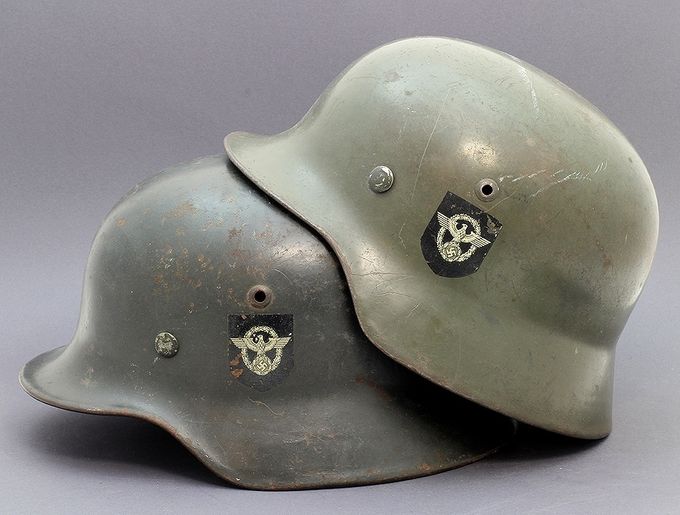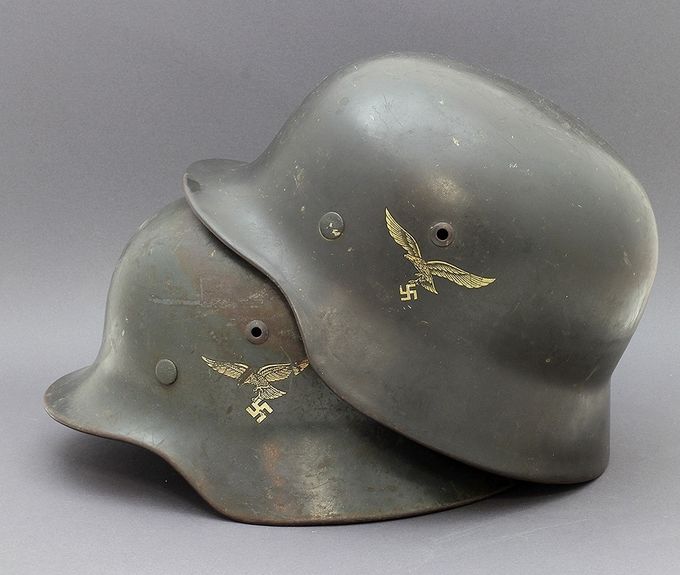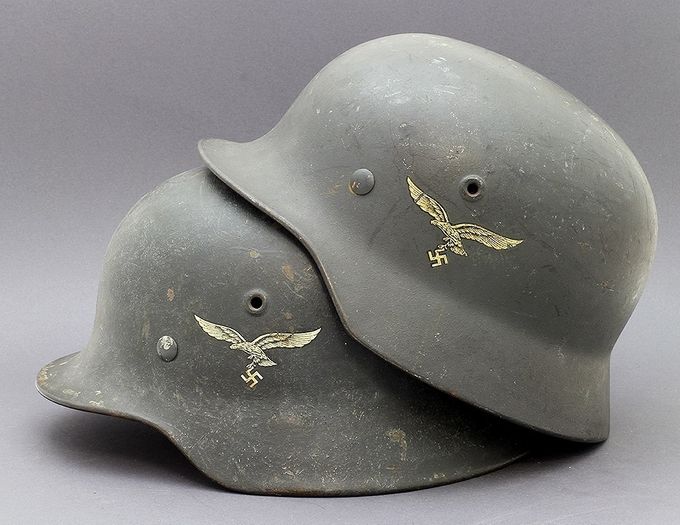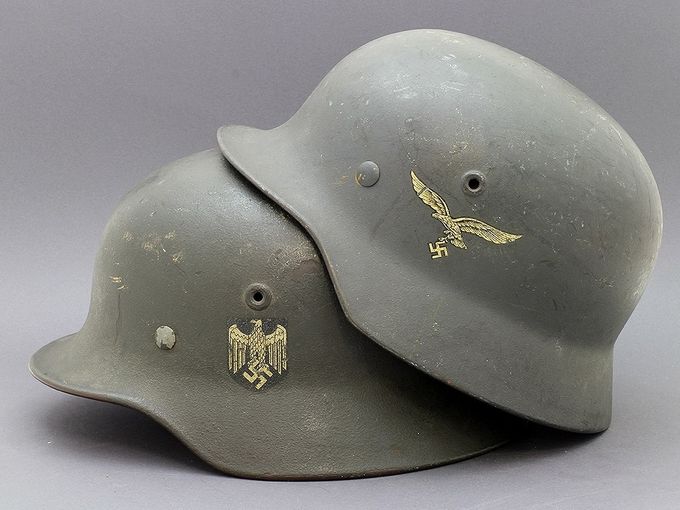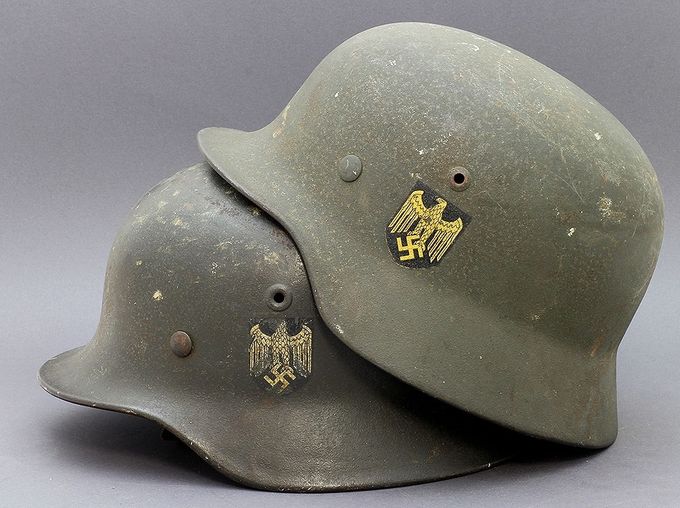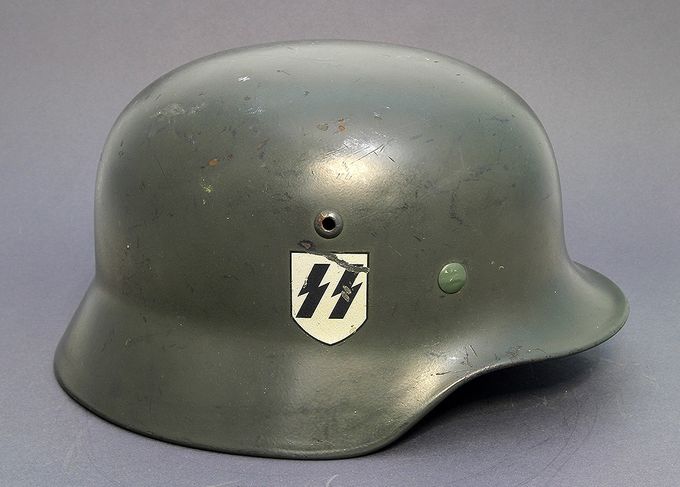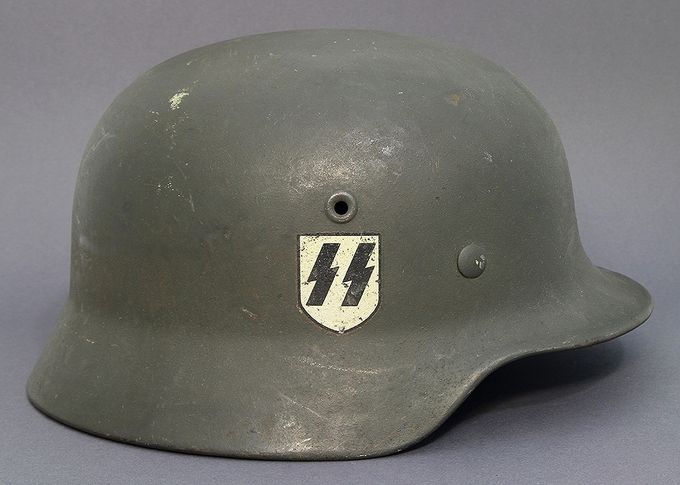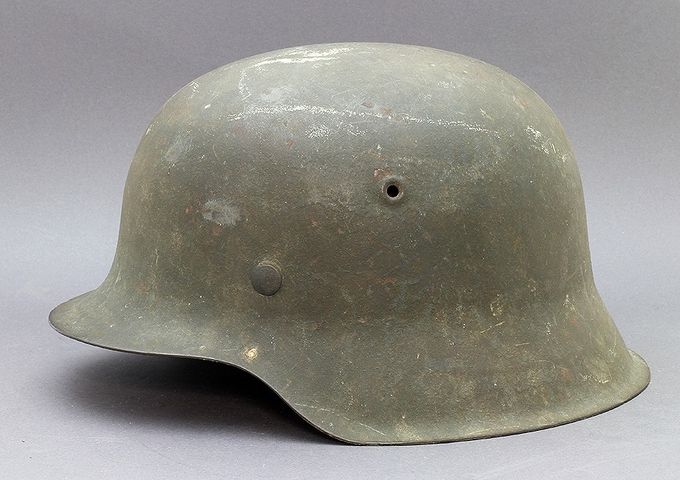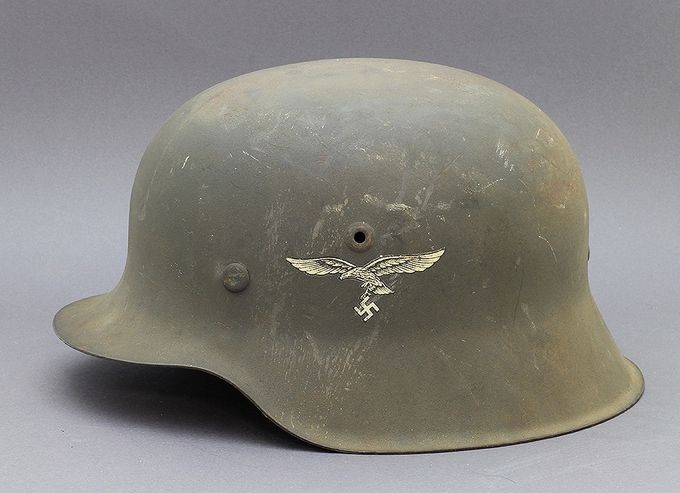Factory Paint Types and Variations
Factory paint on WW2 German helmets differs from reissue paint applied at the depot level or in the field by the individual units/soldiers. There were certain rules or directives that Wehrmacht followed in terms of color and texture. The German helmet industry was mandated by the government to use standard color schemes defined as RAL colors (Reichs Ausschuss für Lieferbedingungen und Gütesicherung), but the different manufacturers adopted various approaches resulting in different shades of the same RAL paint. Early M35 helmets used by all branches had a smooth paint finish and the Heer along with the KM, Polizei and SS used a paint color which was designated "feldgrau" (field grey). Early Luftwaffe helmets were also produced with a smooth paint finish but in a color designated "blaugrau" (blue-grey).
From the outbreak of the war until its end, helmets were painted in a matte textured paint as the smooth paint was unsuitable in combat conditions. Beginning mid-war, helmets were often camouflaged in various colors to provide better concealment.
In these chapters I will show the progression of paint application throughout the war. All pictures provided are from helmets found in Norway which was the Northern part of the Atlantic Wall defence system (1940-1945).
Two M35 helmets with smooth paint finish. To the left an ET and to the right a Quist. Almost the same paint, but the Quist has a more matte green-grey color.
Two M35 helmets with smooth paint finish. To the left an NS and to the right a matte SE.
Two M35 with smooth paint finish. To the left an NS and to the right an SE.
Two M35 SE helmets with smooth paint finish. Notice the difference in color and sheen. The paint on the helmet to the left is often referred to as pea-green while the paint on the helmet to the right is referred to as apple-green.
Two M35 helmets with smooth paint finish. To the left an SE and to the right an ET.
Two M35 helmets with smooth paint finish. To the left a matte SE and to the right an ET.
Three M35 helmets with smooth paint demonstrating the great variation in the color “feldgrau" (field grey). To the left an ET (Polizei), an NS in the middle and to the right an SE.
Two M35 ET helmets with smooth paint. To the left a Heer and to the right a KM. Notice the more grey shade of paint on the KM.
Two M35 ET Polizei helmets with smooth paint. Notice the difference in colors.
Two M35 LW helmets with smooth paint. To the left an ET and to the right an NS.
Two M40 LW helmets with matte textured paint. To the left an ET and to the right a Quist.
Two M40 Quist helmets with matte textured paint. Notice the difference in paint color between Heer and Luftwaffe.
An M40 Quist Heer and an M35 SE KM, both with matte textured paint. The late-produced M35 KM received the textured paint at the factory.
An M35 Quist SS DD with smooth paint. Mark the light green rivet head. The rivet was probably painted seperately with different paint in the manufacturing process.
An M40 ET SS SD with factory paint.
M42 CKL. Notice the thin layer of factory paint, typical of late war helmets.
M42 NS LW. Corrosion/rust bleed can be seen through the thin layer of factory paint.
Del denne siden

